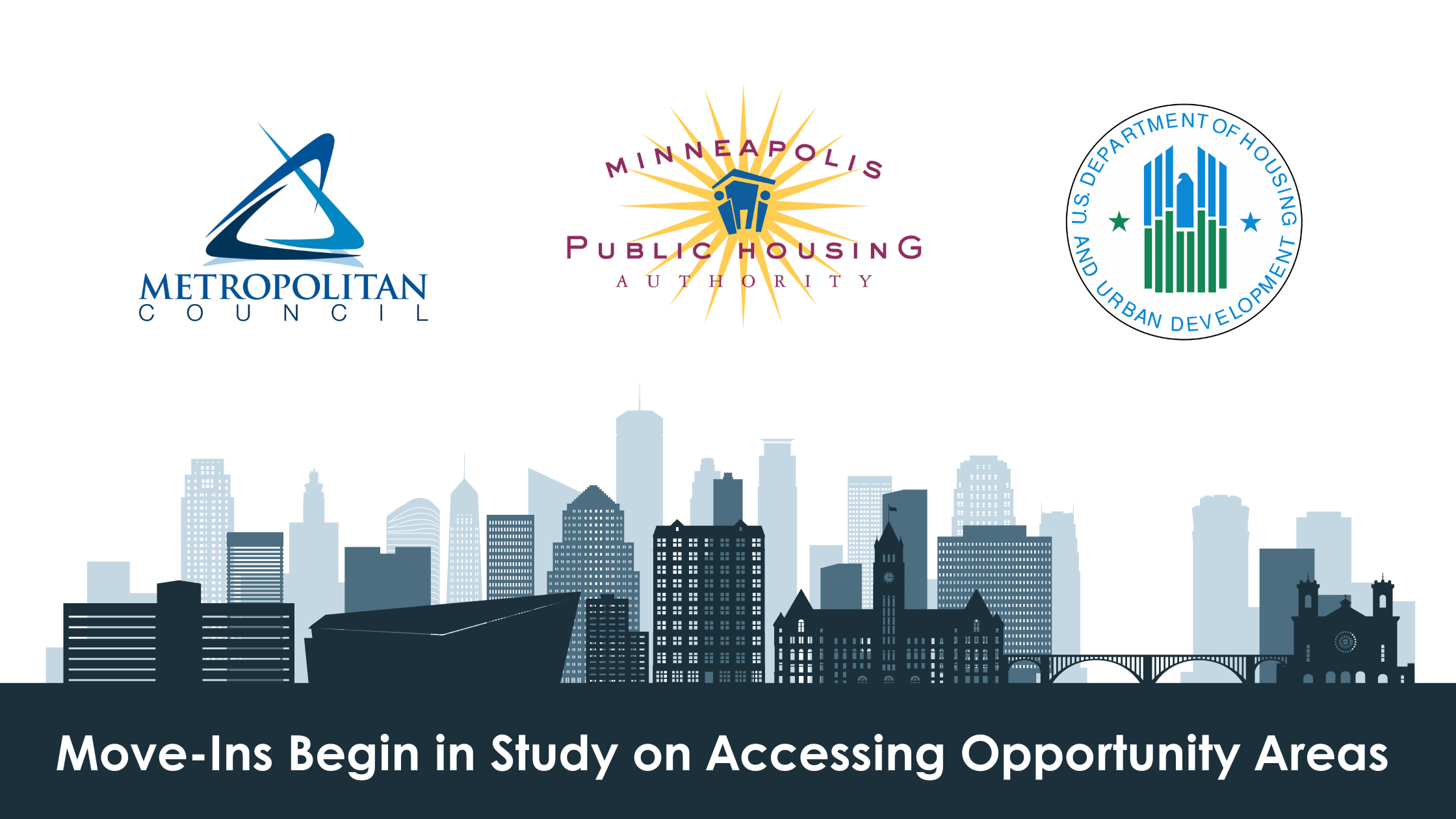The U.S. Department of Housing and Urban Development (HUD) is conducting a multi-year study tracking the long-term impacts of families living in “opportunity areas” with varying levels of housing mobility-related services in the Community Choice Demonstration (CCD). Together, MPHA and the Metropolitan Council’s Housing and Redevelopment Authority (Metro HRA) are one of eight sites nationwide participating in study through 2028. And after years of planning, last week marked the first CCD families moving into their new homes across the Twin Cities.
“MPHA is pleased to be involved in this significant national study that will both inform us about the impact of services on housing outcomes and the opportunities provided to families when housing choice is expanded,” said Brandon Crow, Director of HCV at Minneapolis Public Housing Authority. “Our partnership with Metro HRA on this project further reinforces what can be achieved when PHAs work together to address the housing needs of the people in their communities.”
Opportunity areas are neighborhoods, defined by HUD and determined by census data, where children are most likely to thrive because of better schools and lower poverty rates. Previous studies have shown that when Housing Choice Voucher (HCV) families move to these opportunity areas, children are likelier to achieve upward economic mobility later in life . In fact, for every year a child lives in an opportunity area, their earned income as working adults increases.
Historically, HCV families have found it difficult to move into opportunity areas. Lack of affordable options and few property owners willing to accept vouchers make moving incredibly challenging for voucher-holders. The CCD program is working to study how voucher-holders might be able to better overcome these barriers by providing selected families additional assistance in the rental process to better understand what the most effective solutions to overcoming these barriers to living in opportunity areas may be.
For Mai Yang, a North Minneapolis mother of four, the opportunity to receive additional supports through the CCD to move her family to a new neighborhood was an incredible relief. Previously, the thought of moving and dealing with all the associated logistics and challenges overwhelmed Yang.
“[Moving] gives us a chance to change our culture. It gives my family a chance to grow differently,” said Yang.
Yang sees this move as her opportunity to change the environment her kids grow up in and make a better life for them. And with her oldest daughter heading into high school this upcoming year, the timing was ideal.
For the families in CCD like Yang’s, half will receive the baseline supports traditionally offered to voucher-holders from public housing authorities and/or housing and redevelopment authorities, whereas the other half of families in the CCD receive comprehensive socio-economic support services, including pre- and post-move coaching, housing search assistance, and financial assistance to help cover moving-related expenses like security deposits and application fees.
The Yang family’s story is just one of nearly 10,000 families nationwide that will receive additional housing mobility-related services as a part of CCD. The program is scheduled to run through 2028, with the hopes of creating a clear sense of understanding as to the most effective tools to help voucher-holders access opportunity areas in their community.
For MPHA, being one of just eight localities currently in this national demonstration is another proof point of the agency operating as a nationally recognized high-performer. The agency continues to seek and leverage creative partnerships to help provide safe, stable, affordable housing to MPHA residents and voucher-holders.






